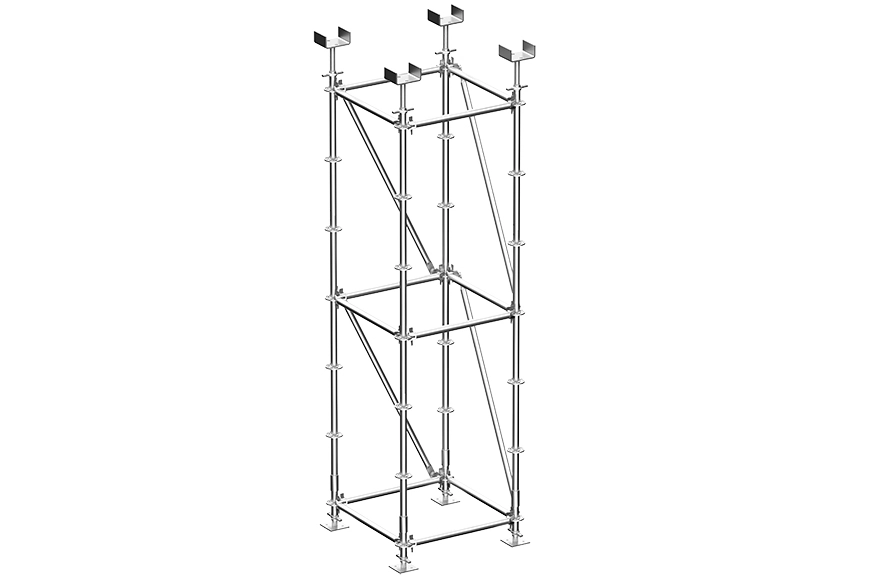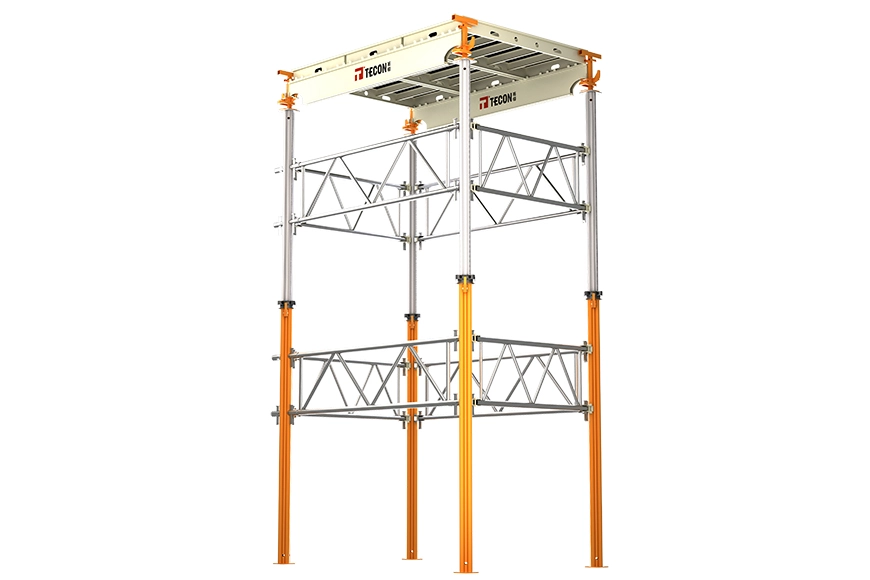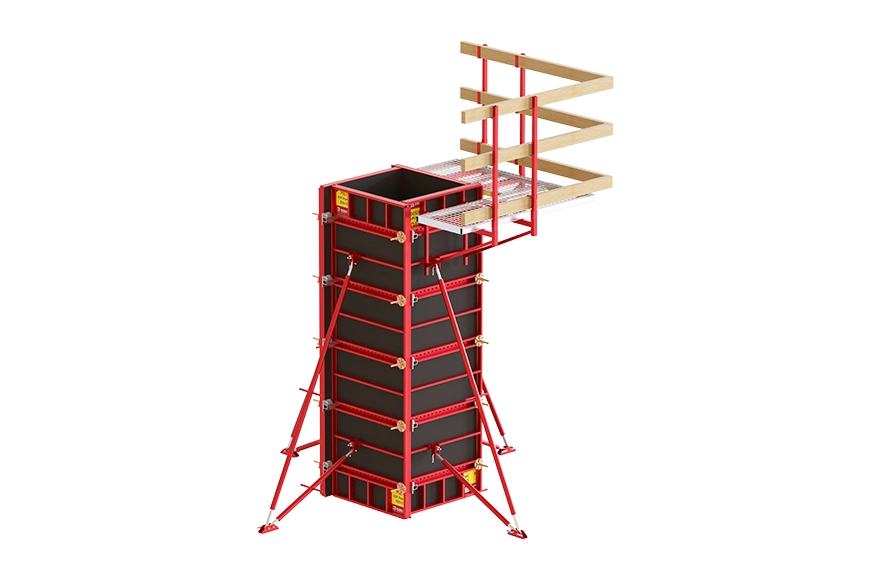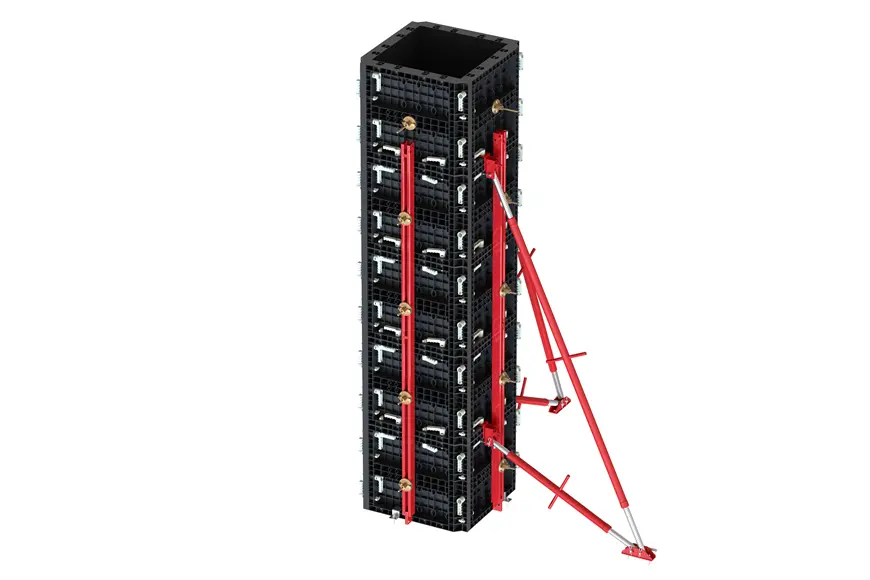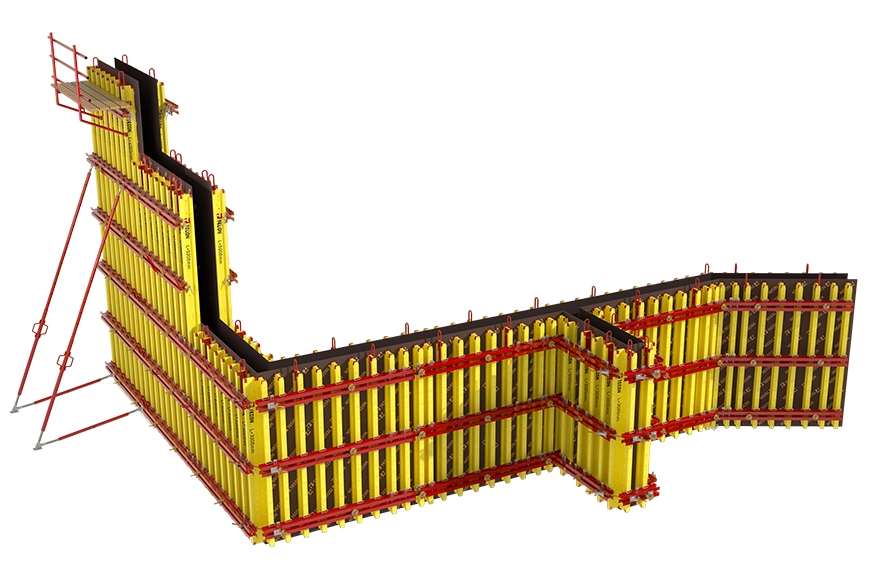1. There are still differences in the bending strength and elastic modulus between a thickness of 15mm hollow plastic formwork and wooden formwork or bamboo plywood with the exact specifications. The strength and rigidity of the hollow plastic formwork are slightly lower than that of bamboo (wood) plywood; therefore, only by appropriately reducing the spacing of the secondary (back) flutes or increasing the thickness of the plastic formwork can the technical construction requirements be met. The newly poured concrete can reliably withstand the self-weight, lateral pressure, and wind loads generated during the construction process.
2. Square wood: Square wood (50mm×100mm) must be planed and pressed, connected by hollow plastic formwork, supporting beams, and column molds.
3. Square tube formwork connection and supporting beam, column form back corrugation, wood fixture reinforcement.
Steel structure (diameter 48X3.0): used for enclosing and supporting formwork; fasteners: used to support the connection and fastening of the steel pipe frame.
Φ14 pair of bolts and step-by-step tightening: connect walls, pillars, and templates on both sides.
Waterproof concrete adopts a pair of pull screws with a water stop ring; other shear walls and frame beams use a couple of pull screws to wear PVC casing; non-waterproof parts of the pair of pull screws can wear Φ16 PVC pipes for repeated use.
1. Please use a tungsten steel saw blade of 80 mesh or more when cutting;
2. Column vertical mold wood spacing ≤100mm, shear wall vertical mold wood spacing ≤130mm, roof wood spacing ≤200mm, beam board wood spacing ≤200mm;
3. Please avoid matching the mold at the highest temperature every day so that the effect of the hollow plastic formwork will be better after the mold is removed;
4. When matching molds for pillars, beams, walls, etc., please use the package pressure process to match molds;
5. The new hollow plastic formwork is placed in the same way as the wooden formwork after the mold is removed. It should be placed flat to prevent deformation due to uneven force on the center of gravity;
6. When using hollow plastic formwork for the first time, first-line operators and construction personnel should be trained in the necessary skills and skills to change the adaptability and habit of new products. This requires Party B to put it in place; (just like the transition from using steel formwork to The same process as the wooden template. This is a process of change and adaptation. This is a necessary process; please pay attention.)
7. The non-flame retardant hollow plastic formwork is the same as wooden. Please strengthen the construction site management, especially to prevent electric welding and open flames. Please strictly follow the electric welding safety operating regulations and be equipped with effective fire-fighting equipment to eliminate potential safety hazards.
8. In order to better use the new hollow plastic formwork, when electric welding is performed at a short distance, waste wood or wet cloth should be used to protect the plate surface to prevent the electric welding slag from scalding the plate surface.
To ensure the quality of the project and leave no safety hazards, technical control should be strengthened during construction. In the process of lifting and transporting the plastic formwork, a designated person shall be designated to direct and hook, and the template is bound to ensure safety and firmness.
When assembling the wall formwork on-site, it should be configured according to the design and construction technical requirements. When the layered and segmented formwork is adopted, the inner and outer steel corrugations and various supports of the lower plastic formwork are all tightened and stabilized. Only then can the installation work of the last layer of composite plastic formwork be installed be carried out.

